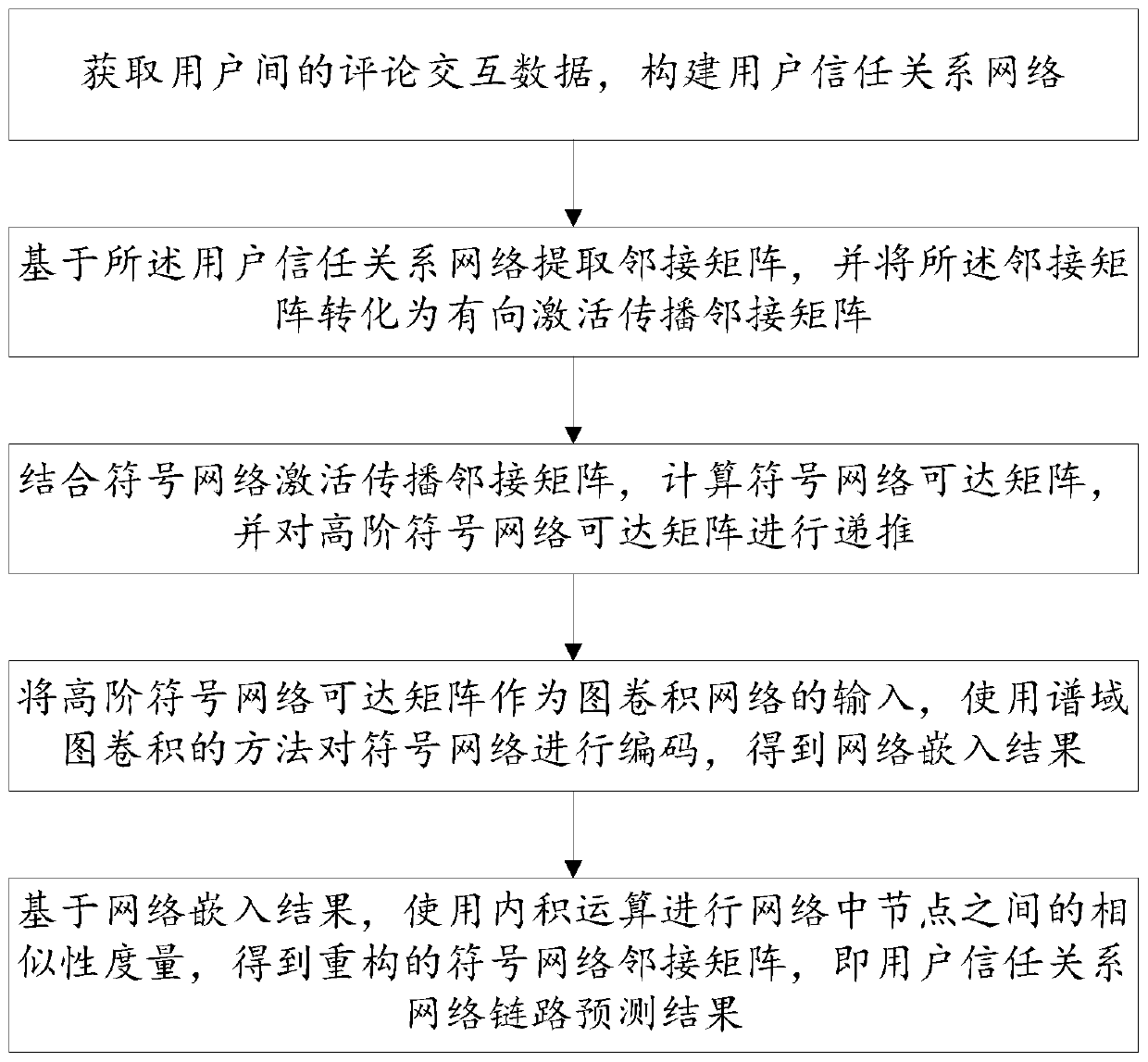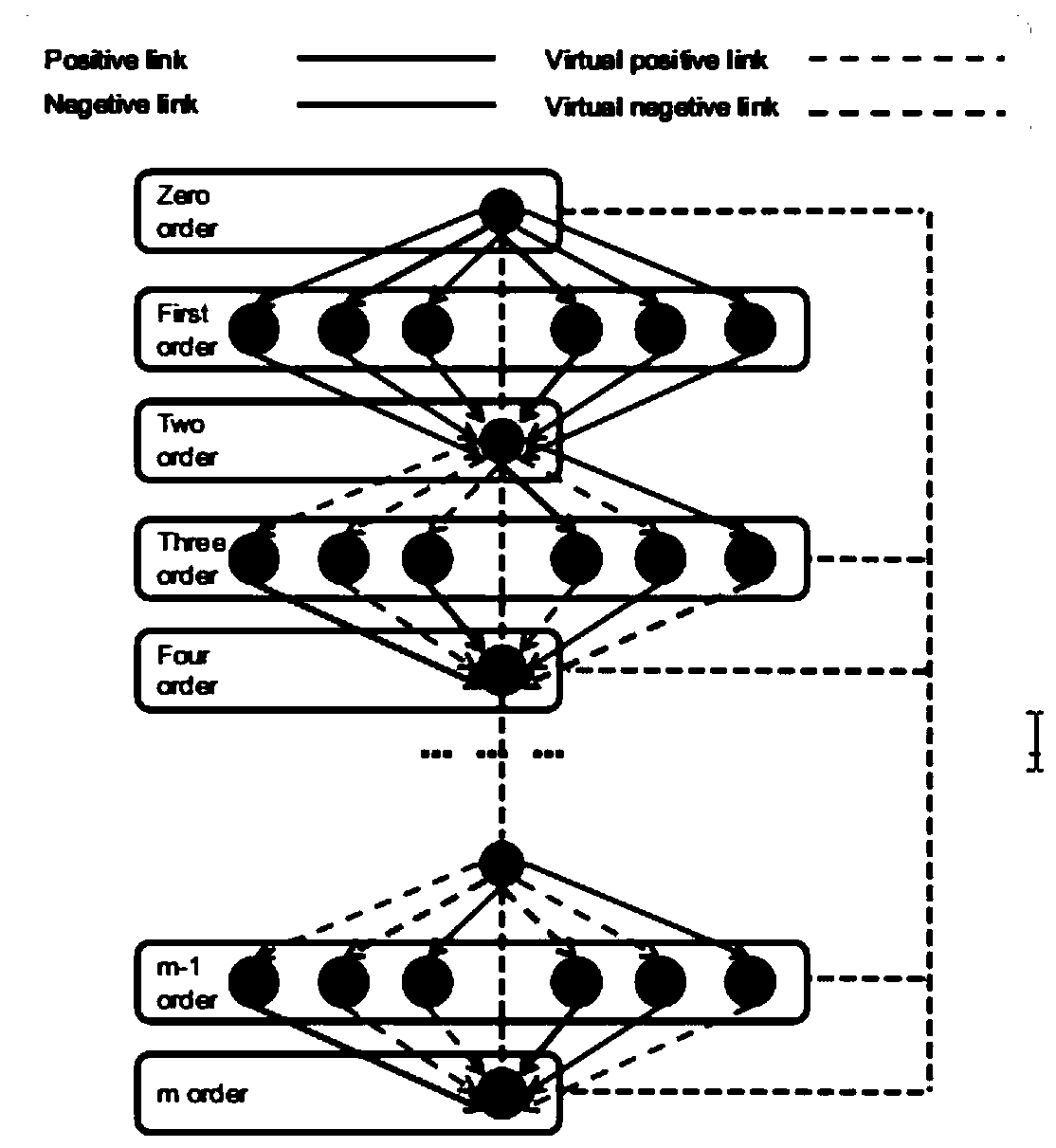User trust relationship prediction method and system based on graph self-encoding network
A technology of self-encoding network and trust relationship, which is applied in the field of user trust relationship prediction based on graph self-encoding network, can solve the problems that directed symbolic network cannot be directly applied, cannot be effectively processed, and cannot learn negative relations, etc., to achieve accurate network embedding The effect of the result
- Summary
- Abstract
- Description
- Claims
- Application Information
AI Technical Summary
Problems solved by technology
Method used
Image
Examples
Embodiment 1
[0054] In order to solve the problem of applying the graph convolution network to the directed symbolic network, this embodiment first defines the adjacency matrix of the symbolic network, defines the balance theory, and the form of the propagation adjacency matrix and the directed activation propagation adjacency matrix based on the balance theory, The concept of GCN is extended to directed symbol networks, and the basic rules of symbol propagation in GCN are described. However, the effect of system prediction has not been significantly improved. The experiment shows that the graph convolutional network does not learn a lot of effective information from the input matrix. The reason is that for the input information of the encoding layer-the graph self-encoding network, that is, the directed activation propagation adjacency The matrix is too sparse (the density of 0 in the matrix is very high), which leads to insufficient basis for prediction and limits the accuracy of syst...
Embodiment 2
[0134] The purpose of this embodiment is to provide a user trust relationship prediction system based on graph self-encoding network, including:
[0135] The symbolic network acquisition module acquires comment interaction data between users and builds a user trust relationship network;
[0136] A symbolic network processing module extracts an adjacency matrix based on the user trust relationship network, and converts the adjacency matrix into a directed activation propagation adjacency matrix;
[0137] The reachability matrix calculation module combines the symbolic network activation propagation adjacency matrix to calculate the symbolic network reachability matrix;
[0138] The reachability matrix recursion module, combined with the symbolic network activation and propagation adjacency matrix, calculates the symbolic network reachability matrix, and recurses the high-order symbolic network reachability matrix;
[0139] The network embedding module takes the high-order symb...
Embodiment 3
[0142] The purpose of this embodiment is to provide a computer-readable storage medium in which a plurality of instructions are stored, and the instructions are suitable for being loaded and executed by a processor of a terminal device:
[0143] Obtain comment interaction data between users and build a user trust relationship network;
[0144] extracting an adjacency matrix based on the user trust relationship network, and converting the adjacency matrix into a directed activation propagation adjacency matrix;
[0145] Combining the symbolic network to activate and propagate the adjacency matrix, calculate the symbolic network reachability matrix, and recurse the high-order symbolic network reachability matrix;
[0146] The high-order symbolic network accessibility matrix is used as the input of the graph convolutional network, and the symbolic network is encoded by the spectral domain graph convolution method to obtain the network embedding result;
[0147] Based on the ne...
PUM
 Login to View More
Login to View More Abstract
Description
Claims
Application Information
 Login to View More
Login to View More - R&D
- Intellectual Property
- Life Sciences
- Materials
- Tech Scout
- Unparalleled Data Quality
- Higher Quality Content
- 60% Fewer Hallucinations
Browse by: Latest US Patents, China's latest patents, Technical Efficacy Thesaurus, Application Domain, Technology Topic, Popular Technical Reports.
© 2025 PatSnap. All rights reserved.Legal|Privacy policy|Modern Slavery Act Transparency Statement|Sitemap|About US| Contact US: help@patsnap.com



